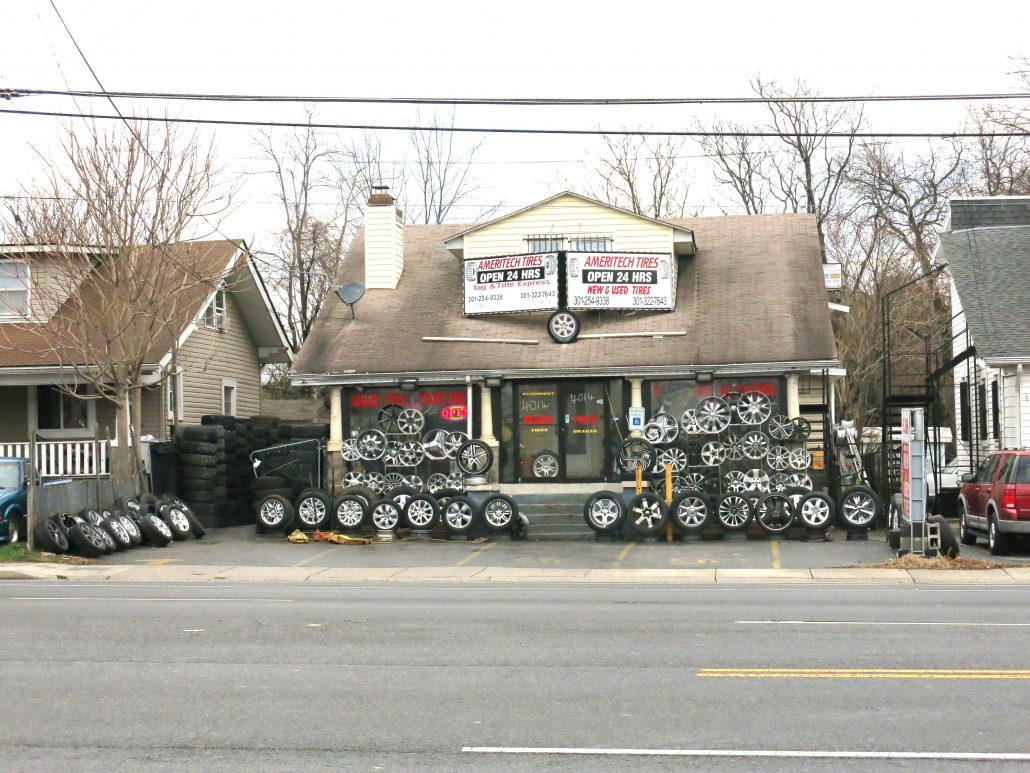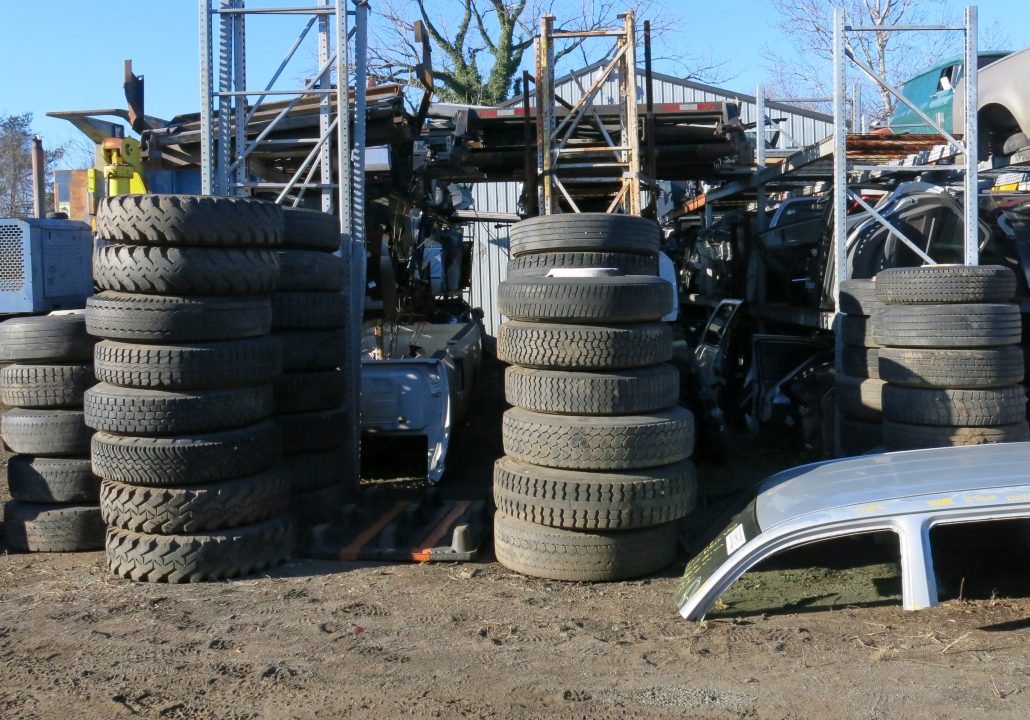By Paul Ruffins
In December 2022, an environmentalist discovered that nearly a thousand scrap tires had been dumped from Interstate 295 down into Anacostia Park. As of press time, no one knows who made the toss, but two local Maryland cases provide clues as to why they may have done it.
In April 2022, Jonathan Meadows, of Riverdale, pleaded guilty to illegal transportation of scrap tires and littering. He had rented a truck and dumped scrap tires in the woods behind a commercial property in Upper Marlboro at least five times. “Meadows chose to ignore the law in favor of illegally pocketing a few bucks,” stated then-Attorney General Brian Frosh. Under Maryland law, commercial businesses disposing of scrap tires must use a licensed hauler, and those haulers must dispose of the tires at a licensed facility. Illegal haulers try to skirt the law by simply dumping them and pocketing the fees they collect.
In May 2019, a licensed scrap tire hauler pleaded guilty to a similar violation. At the time, Thomas Okoronkwo, of Glenarden, owned auto repair and tire shops in Brentwood, Suitland and Capitol Heights. Okoronkwo admitted that he was dumping tires at a Midas service center in Upper Marlboro to avoid being fined for storing too many at his own locations.

Photo credit: Paul Ruffins
Why do tires get dumped? While the scrap metal and parts in used cars have the highest recycling value of any consumer product, tires stack up in a very different category. The physical properties that make modern tires strong enough to survive potholes also make them uniquely difficult and expensive to recycle. And there are a lot of them; the Maryland Department of the Environment estimates that the state amasses almost 6 million scrap tires annually.
The economics of disposal
At Prince George’s Brown Station Road Sanitary Landfill, residents can drop off up to five tires a year for free. Businesses, which are charged $25 a ton to dump scrap steel, pay a whopping $400 a ton to dump tires, in part because those tires can’t go into landfills in Maryland — this restriction holds in 37 other states, as well. Instead of being disposed of, tires are sent for processing, which is paid for by the hefty dumping fee at the landfill. A compact SUV’s tires weigh approximately 30 pounds each, and tires on large SUVs and pickup trucks can weigh as much as 60. Assuming an average of 40 pounds per tire, then, 50 tires weigh in at a ton. Work the math: A commercial tire hauler would currently pay about $8 to dispose of each tire at the landfill, not factoring in their own hauling costs. They could probably save money by selling them to a company that recycles tires, but those companies can be hard to find.
Why are tires so hard to handle?
Once they’re no longer useful on the road, tires present significant challenges. They’re noncompressible, and their shape makes them tend to rise to the top of ever-shifting landfills. They hold water, making them a perfect breeding place for mosquitoes and other pests. And they present a considerable fire risk. In October 1983, a tire fire in Mountain Falls, Va., sent toxic smoke across four states. The fire burned for nine months and consumed some 5 to 7 million tires, and cleanup cost $11.8 million. In 1996, a tire fire destroyed a portion of Interstate 95 in Philadelphia; a similar fire laid waste to Interstate 85 in Atlanta in 2017. Because of this fire risk, many states strictly limit the numbers that can be stored at a single location.
Can tires be reused?
Worn-out passenger car tires are rarely reused on vehicles. According to Consumer Reports, it was common to retread passenger car tires when bias-ply tires only lasted 10,000 to 20,000 miles. This practice became obsolete when the gas crisis of 1973-74 led to the widespread adoption of steel-belted radial tires, which get better fuel mileage and can last 60,000 to 80,000 miles. On the other hand, commercial truck or rear bus tires, which can cost as much as $375 to $400 each, can safely be retreaded three or four times.

Photo credit: Paul Ruffins
How are tires recycled?
Recent data from the U.S. Tire Manufacturers Association gives us a glimpse into how tires are recycled. In 2021, 32% of America’s scrap tires were used to manufacture tire-derived fuel, 32% for ground rubber, 17% were landfilled (but only in states that allow this), and 6% were used for civil engineering projects. The remaining 13% went to unspecified uses.
Tire-derived fuels. Tires produce approximately the same energy per ton as coal and oil, so many tires are simply shredded and burned to help power cement kilns and steel mills. While burning tires does conserve other fuels (and keeps tires out of landfills in states with restrictions), there is concern that using tires as a supplement to other fuels produces more toxic pollution than burning coal alone. Fortunately, the percentage of scrap tires being burned has dropped from about 48% a decade ago to 32% in 2021. (A process known as pyrolysis turns tires into diesel fuel, but it’s rarely used in the U.S.)
Ground rubber, which is simply rubber from scrap tires that’s separated from the steel wire and shredded, is combined with asphalt to improve pavement performance and reduce noise. Ground tire rubber is also used to give spring and durability to athletic fields and running tracks. Used as fill between railroad ties, it absorbs sound and vibrations.
In civil engineering, whole tires can be used to build retaining walls and underlay concrete roadbeds or septic drain fields. Shredded tires are often used as a backfill dirt equivalent, in part because the material is often cheaper than soil. Tires are also used as soundproofing, as blasting mats to buffer controlled explosions and as bumpers on loading docks.
Even as tires can be put to good use after their road years are over, we still burn or landfill about 125 million tires every year in the U.S. You can help bring this number down by buying quality tires, keeping them properly inflated and rotating them regularly to make them last as long as possible.







